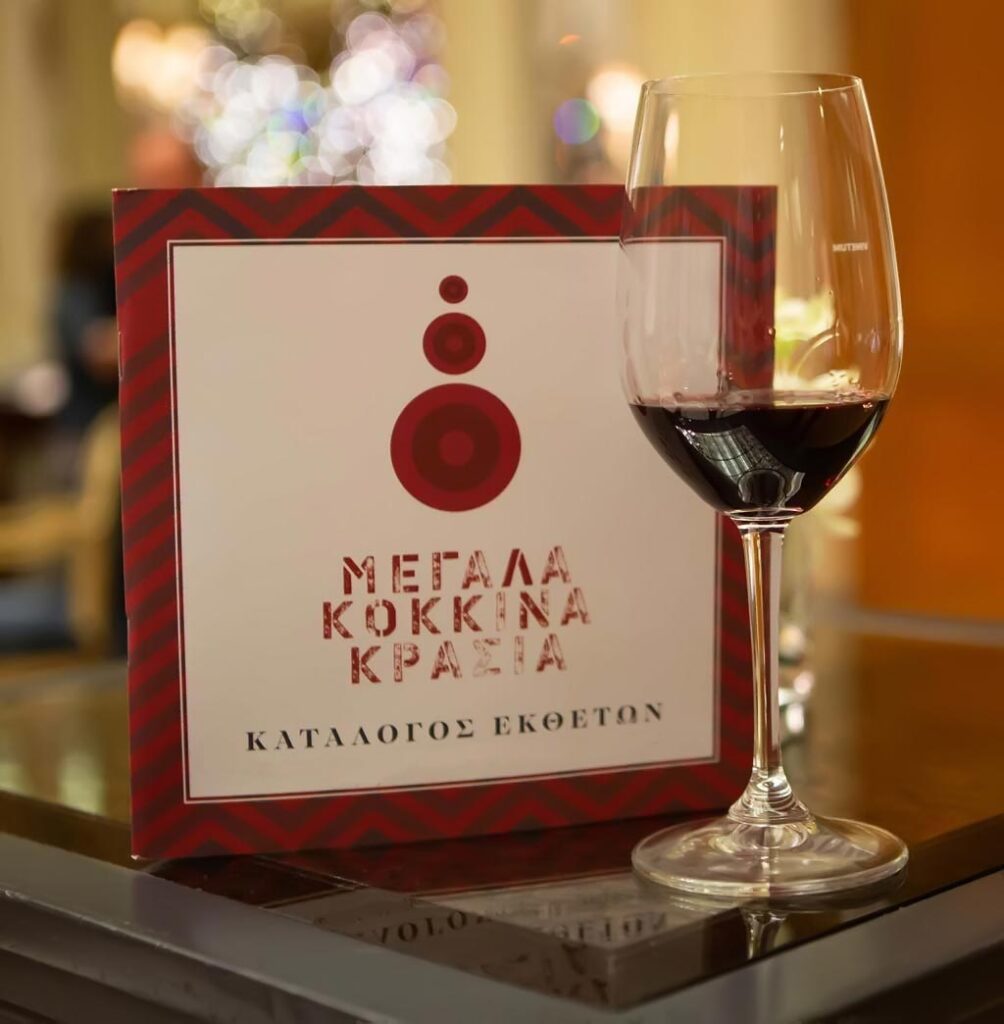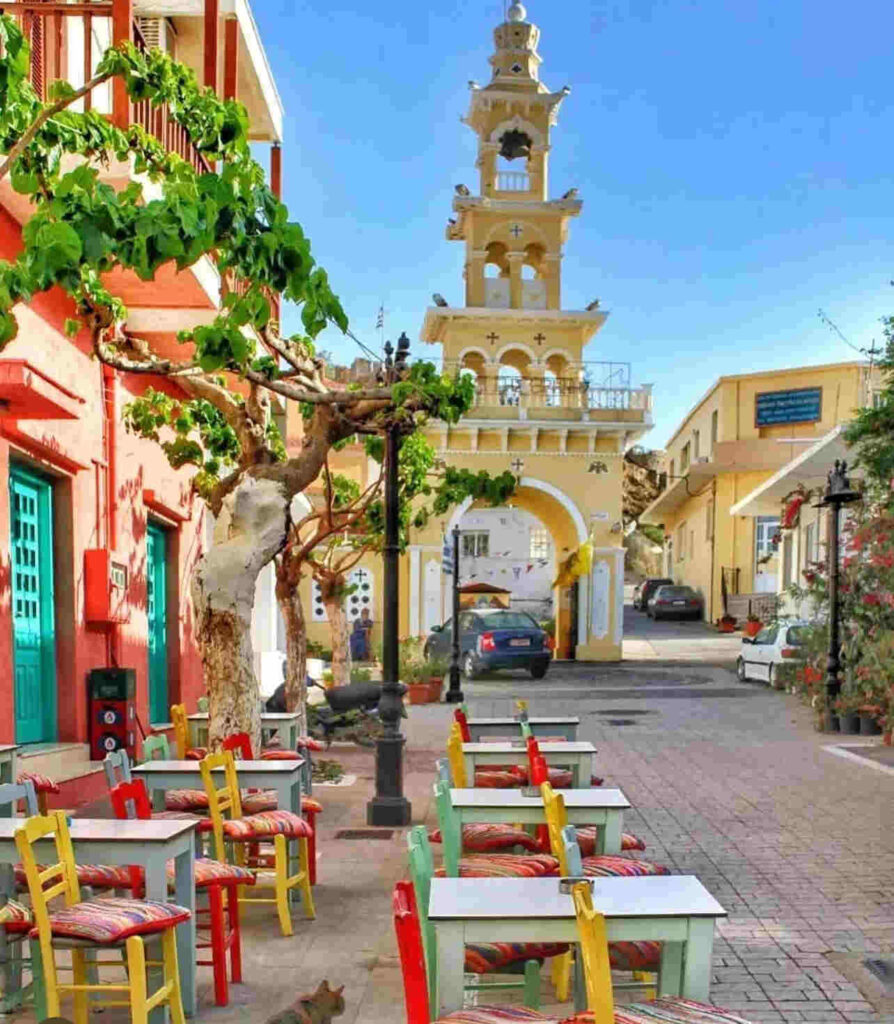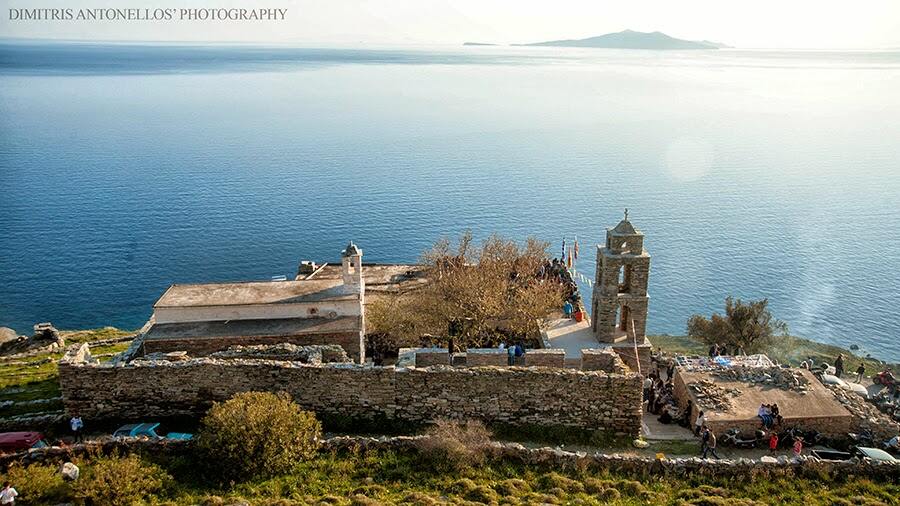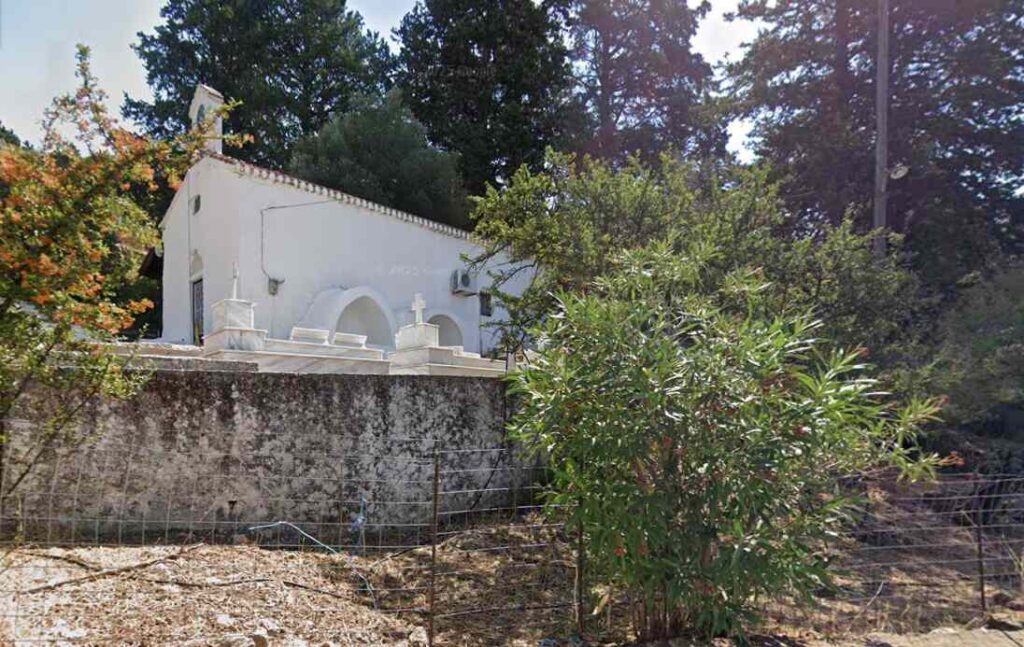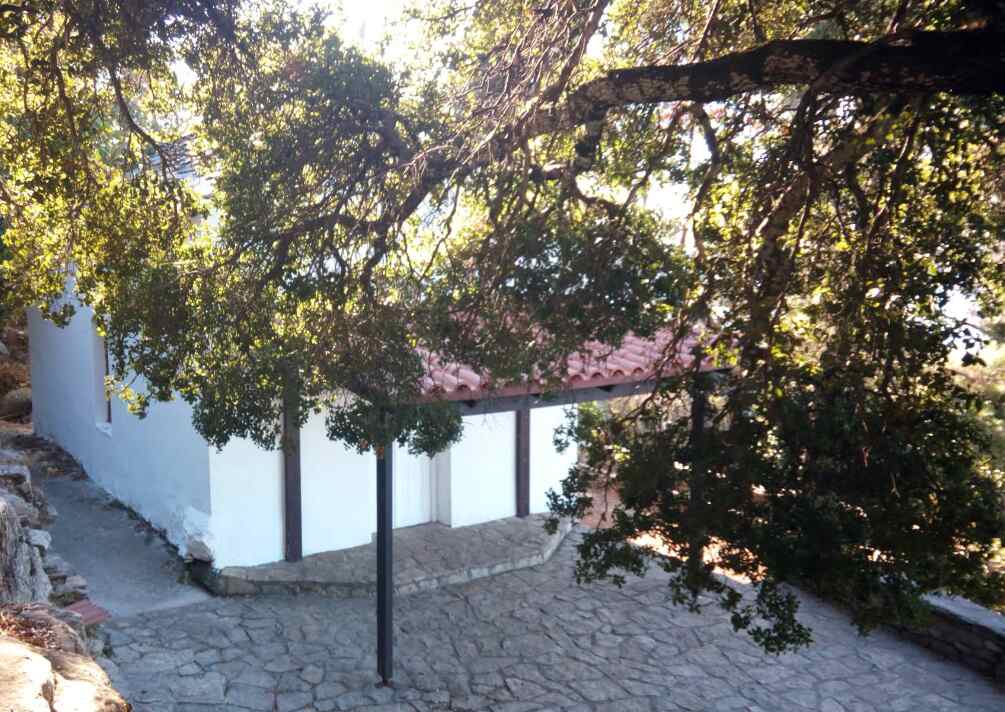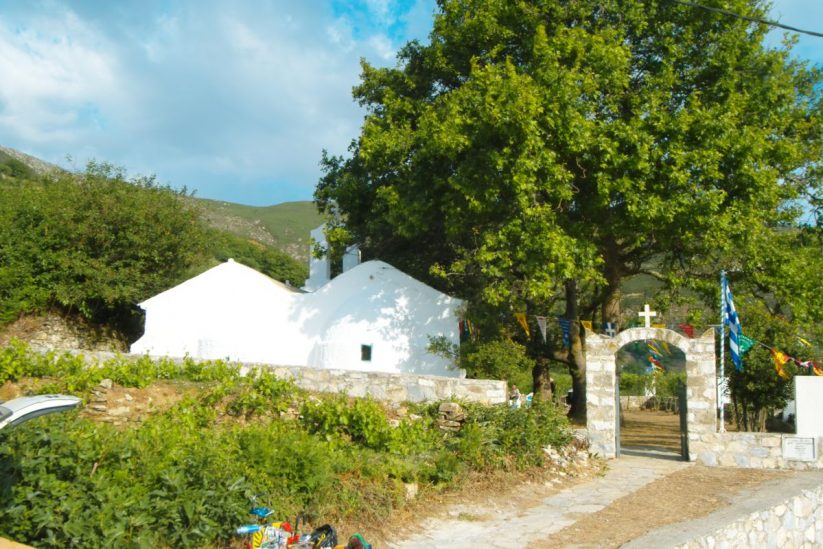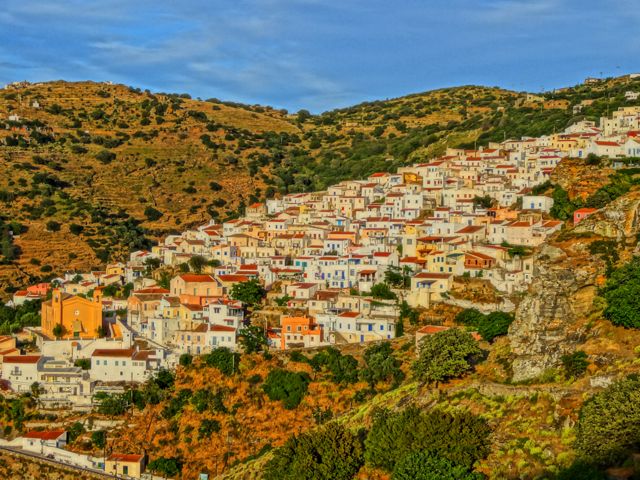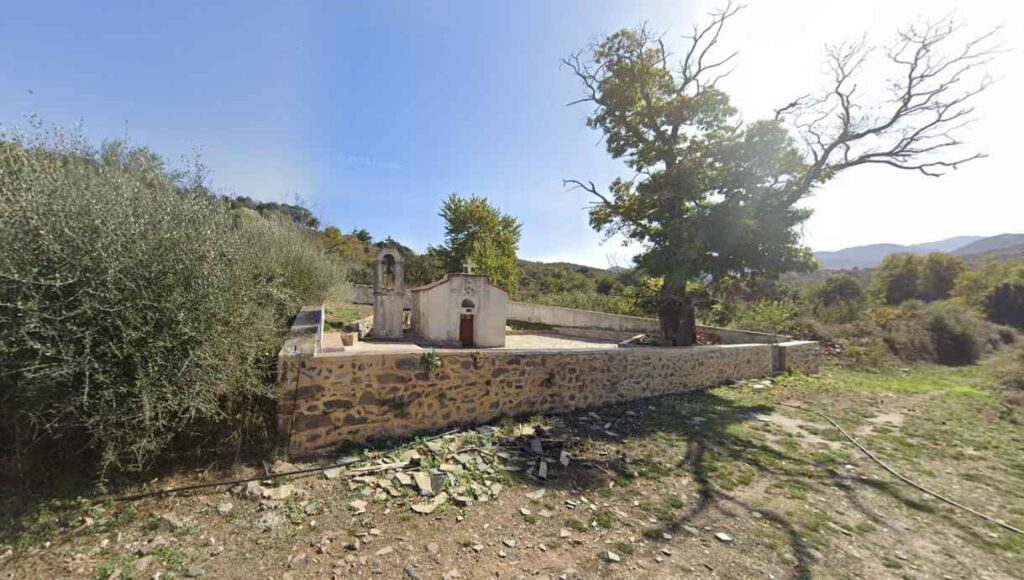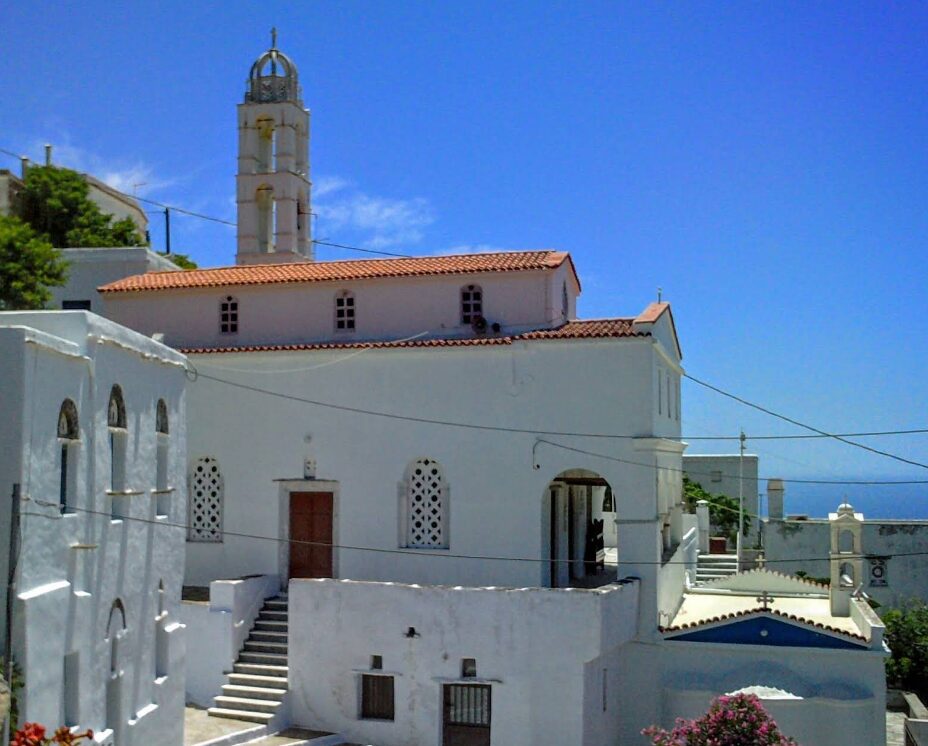The Feast of Our Lady of Vourniotissa is celebrated on September 8, the day her icon was discovered — a date that coincides with the Nativity of the Theotokos.
According to tradition, in 1670, fishermen from Sklavochori found an icon of the Virgin Mary floating in the sea. They took it with them and began their journey back to their village. Along the way, they stopped to rest at the chapel of Saint John, but when they tried to resume their journey, the icon had become so heavy that they could not lift it. Word of the miracle spread quickly, villagers from the surrounding area gathered, a supplication service was held, and construction began on a new church.
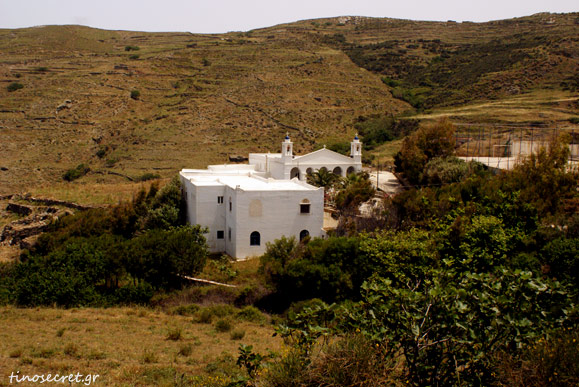
The Monastery of the Virgin of Vourniotissa lies 4 km from the village of Agapi, offering panoramic views of the sea and Kolymbithra Bay. It is dedicated to the Virgin of Vourniotissa, whose miracle-working icon was discovered there and is now housed in the ancient Monastery of the Assumption of the Virgin Mary, also known as the Lady of the Angels of Kechrovouni. The monastery celebrates its feast day annually on September 8 — the day in 1870, according to legend, when the icon was miraculously found.
Indicative Program for the Festival of Our Lady of Vourniotissa
September 7 – Eve of the Feast
- 18:30 – Arrival of pilgrims at the Monastery of the Virgin of Vourniotissa
- 19:00 – Great Vespers (Megalos Esperinos) with Artoklasia (Blessing of the Five Loaves)
- 20:30 – Candlelight procession of the holy icon around the monastery courtyard
- 21:00 – Offering of traditional sweets (loukoumi, amygdalota, and pasteli) to pilgrims
- 22:00 – Informal gathering with local music and storytelling under the stars
September 8 – Feast Day
- 07:30 – Matins (Orthros) followed by the Divine Liturgy (Theia Leitourgia)
- 10:30 – Supplication Service (Paraklisis) to the Virgin Mary
- 11:30 – Procession of the icon to the nearby chapel of Saint John, accompanied by chanting and bells
- 12:30 – Traditional treats and refreshments served in the monastery courtyard
- 13:30 – Lunch in the village of Agapi with local dishes, wine, and music
Afternoon & Evening Festivities
- 17:30 – Folk music and dance performances in the main square of Agapi
- 19:00 – Traditional balo and syrto dances with live violin and lute music
- 20:30 – Communal dinner hosted by the villagers with Tinian specialities (froutalia, louza, graviera, kopanisti, xerotigana)
- 22:00 – Closing prayers and farewell blessings
On the island of Tinos, it is customary to whitewash both the interior and exterior of every church when honouring the saint to whom it is dedicated. Women from the village clean the church grounds, polish the candlestands, and adorn the sanctuary with flowers. After Mass, refreshments are offered in the courtyard. Festivities often continue in the village square, where people dance the traditional balo and syrto to the sounds of local musicians playing violin-based instruments.
Those celebrating their name day open their homes to visitors, decorating their tables with fine dinnerware and white tablecloths. Guests are treated to a generous spread of local dishes and an abundance of wine, enjoyed late into the evening, accompanied by traditional sweets such as psarakia, meringues, pasteli, and xerotigana, along with homemade raki.
Traditional cuisine on Tinos includes artichokes prepared in many ways, sun-dried tomatoes in batter, froutalia (an omelette with potatoes and sausage), savore with molasses, fried fish with petimezi sauce, pork sausages, saltsisi, and louza (cured pork). Notable cheeses include the island’s famous graviera and kopanisti. For desserts, Tinos is known for amygdalota, xerotigana, karidota, pasteli, loukoumi, various kinds of halva, and its renowned thyme honey.
Photo: tinosecret.gr




